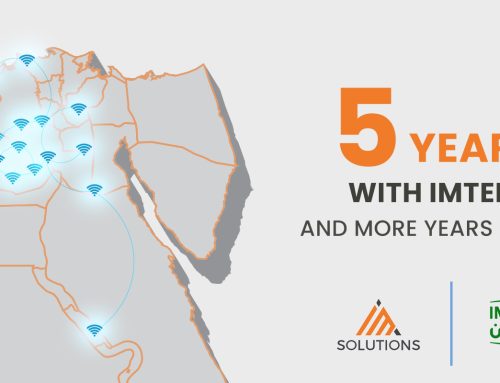The Importance of Website Design and the Development of the Egyptian Web Design Market
In today’s digital world, a business without a website is like a shop without a sign. With more people using the internet to search for products, services, and information, website design has become one of the most critical components of any business strategy. In Egypt, this need has driven the rise of professional website design companies and the expansion of website design services tailored for a growing and competitive market.
This article explores the importance of good website design, breaks down the types and techniques used, and provides a closer look at how the website design market in Egypt has developed in recent years.
Why Website Design Matters
First impressions matter. When users land on a website, it only takes a few seconds for them to decide whether they’ll stay or leave. A well-designed website builds trust, communicates professionalism, and improves the user experience. Whether it’s for an e-commerce platform, a personal portfolio, or a corporate business site, the design reflects the brand’s identity.
Good website design services go beyond just visual appeal. They also focus on functionality, speed, mobile responsiveness, and user interface (UI) and user experience (UX) design. A professionally designed site can lead to:
- Increased traffic and lower bounce rates
- Better conversion rates
- Higher rankings on search engines like Google
- A competitive edge in your industry
Types of Website Design: Static vs. Dynamic
Website design can be broadly categorized into two main types: static and dynamic. Each serves different purposes and uses different technologies.
Static Website Design
A static website is built using simple HTML and CSS. It displays the same content to every visitor and is ideal for small websites or businesses that don’t need regular updates. Because there’s no interaction with databases, static websites are typically faster to load and cheaper to develop.
Origins and Use: Static websites were among the first types of websites created in the early days of the internet. They are still used today for landing pages, digital brochures, and one-page sites.
Languages Used:
- HTML (Hypertext Markup Language)
- CSS (Cascading Style Sheets)
- Basic JavaScript for minimal interactivity
Dynamic Website Design
Dynamic websites generate content in real-time based on user interactions or other inputs. These sites require server-side processing and are often built using content management systems (CMS) like WordPress, Joomla, or Drupal.
Origins and Use: The need for interactive, user-focused content led to the rise of dynamic websites in the late 1990s and early 2000s. Today, most business, e-commerce, and media websites are dynamic.
Languages Used:
- HTML & CSS (for structure and styling)
- JavaScript (for interactivity)
- PHP, Python, Ruby, or Node.js (server-side programming)
- SQL or NoSQL (for databases)
Core Techniques in Modern Website Design
Professional website design companies use a variety of techniques to ensure that the websites they create are visually appealing, responsive, and functional. Some of the most important techniques include:
Responsive Design
This technique ensures that a website looks and functions well on all devices—desktops, tablets, and smartphones. With mobile users increasing in Egypt and worldwide, responsive design is no longer optional.
UX/UI Design
User Experience (UX) and User Interface (UI) design focus on how users interact with a site. Good UX makes the site easy and enjoyable to use, while strong UI design enhances visual appeal and layout.
SEO-Friendly Design
Search Engine Optimization (SEO) is integrated into the design from the start. This includes fast-loading pages, mobile responsiveness, proper HTML tagging, and clean coding, helping sites rank higher in search results.
Speed Optimization
No one likes a slow website. Techniques like image compression, code minification, and using Content Delivery Networks (CDNs) help reduce load times and improve user satisfaction.
The Rise of the Website Design Market in Egypt
As Egypt continues to embrace digital transformation, the demand for professional website design services has surged. Businesses across industries—retail, tourism, real estate, education, and healthcare—are realizing that an effective online presence is essential for growth.
Growth Drivers
Several factors have contributed to the expansion of the website design market in Egypt:
- Increased Internet Penetration: More than 70% of Egyptians have internet access, leading to more online engagement.
- Government Support: Egypt’s Vision 2030 emphasizes digital transformation across public and private sectors.
- Entrepreneurial Boom: A rise in startups and small businesses has led to increased demand for affordable website design services.
- E-commerce Expansion: With more businesses moving online, e-commerce platforms require specialized design and development.
Role of Local Website Design Companies
A website design company in Egypt understands the local market, user behavior, and language, giving them a unique advantage over international competitors. These companies provide:
- Tailored design for Arabic and bilingual websites
- Culturally relevant UI/UX decisions
- Competitive pricing
- Ongoing maintenance and support
Some top Egyptian firms also offer additional services such as branding, SEO, content writing, and digital marketing, making them full-service digital partners.
Choosing the Right Website Design Service
When selecting a website design service, businesses should consider the following:
- Portfolio: Look at the company’s previous work to assess design quality and industry experience.
- Technical Expertise: Ensure they work with modern technologies and design trends.
- Client Reviews: Feedback from past clients can reveal insights into reliability and customer service.
- Customization: Every business is unique. The service should be able to tailor design solutions accordingly.
- Post-Launch Support: Ongoing support is critical for fixing bugs, making updates, and ensuring site performance.
Future Outlook of the Egyptian Web Design Industry
The future looks promising for the website design market in Egypt. As businesses continue to invest in digital tools and platforms, the need for modern, scalable, and secure websites will grow.
Emerging trends like artificial intelligence, voice search optimization, and progressive web apps (PWAs) will shape the next generation of website design. Egyptian firms that adapt to these trends and upskill in newer technologies will stay competitive both locally and globally.
Moreover, with Egypt’s youthful, tech-savvy population and strong educational infrastructure in computer science and design, there is a steady pipeline of talent entering the field. This ensures innovation and growth for years to come.
Conclusion
Website design is more than just creating a pretty homepage—it’s about building a bridge between businesses and their customers in the digital world. Whether you’re a small startup or a large corporation, investing in quality website design services can make a huge difference in your success.
In Egypt, the web design market has evolved rapidly to meet growing demands, with many capable website design companies offering cutting-edge solutions. From understanding different website types to embracing modern techniques, Egyptian designers are well-positioned to serve local and international clients alike.
For any business seeking to grow its digital presence, partnering with a reliable website design company in Egypt is a smart move that can lead to long-term success.




